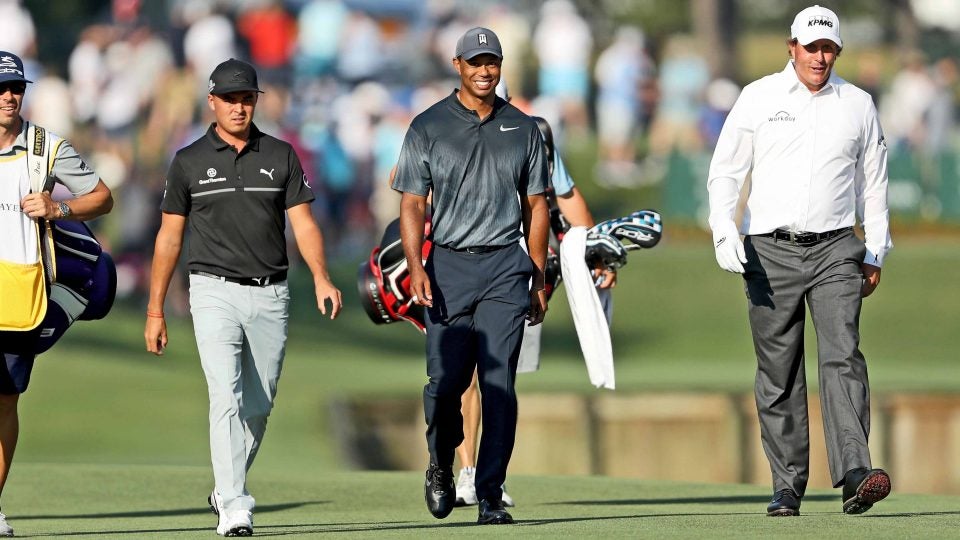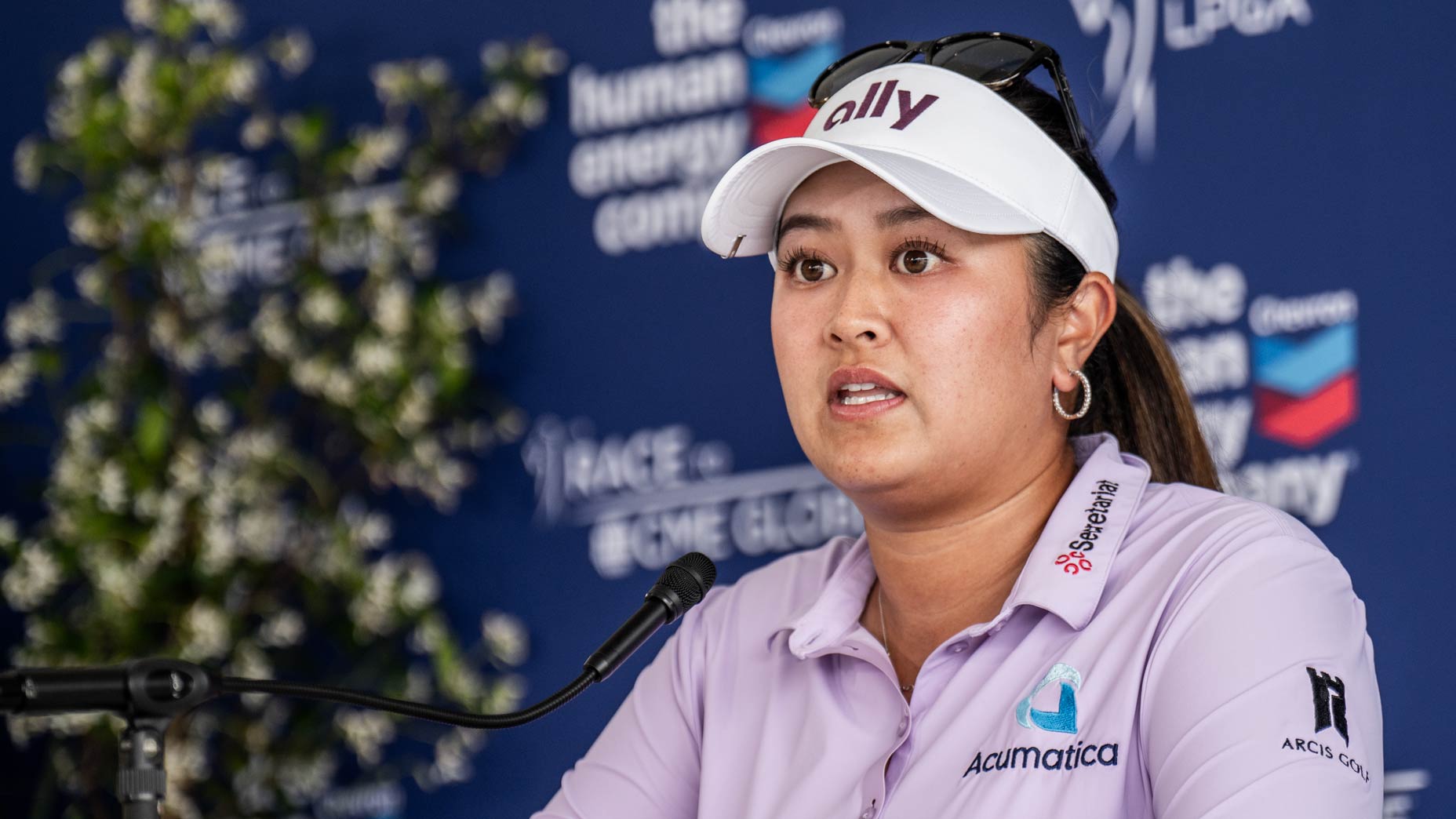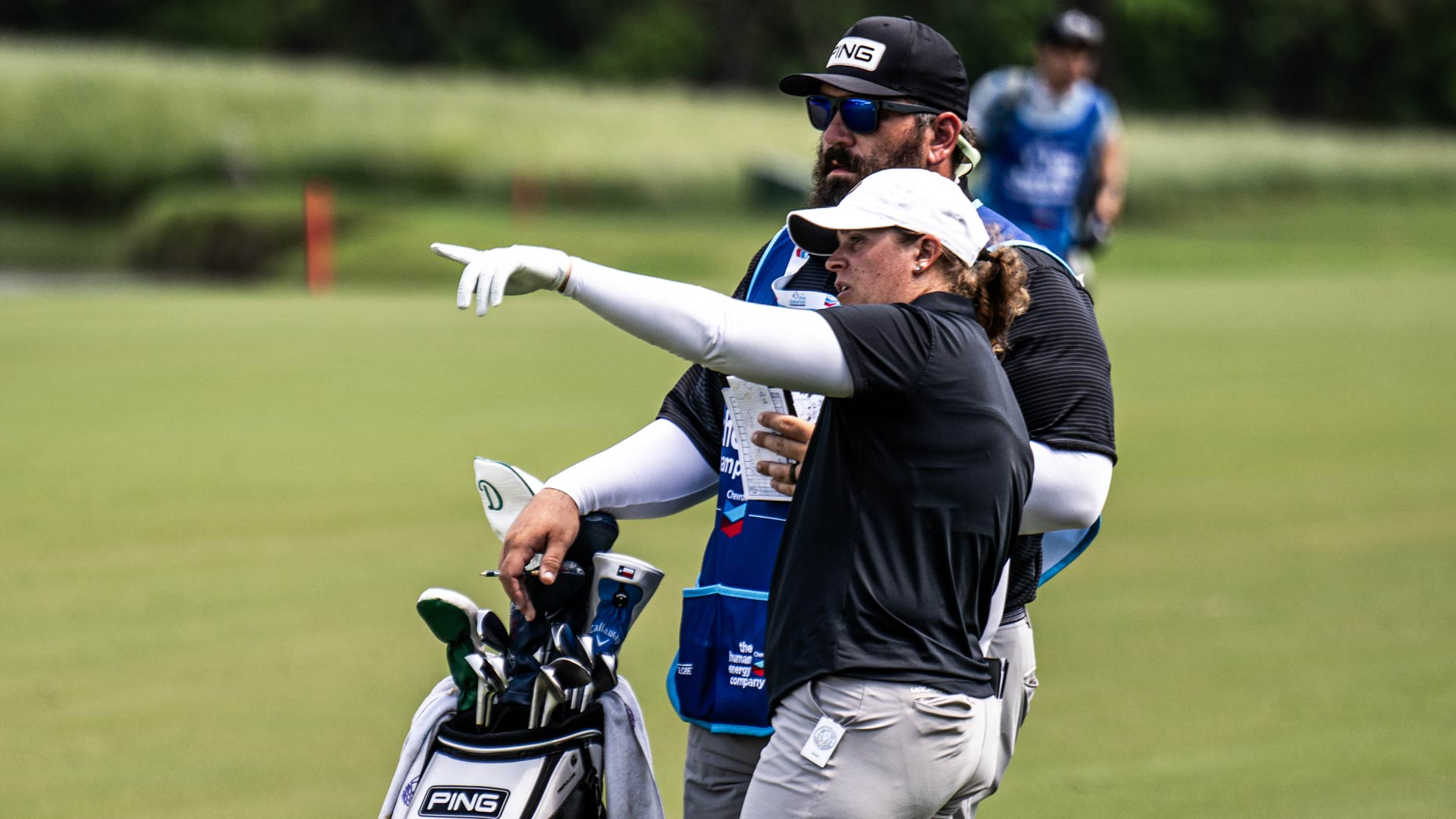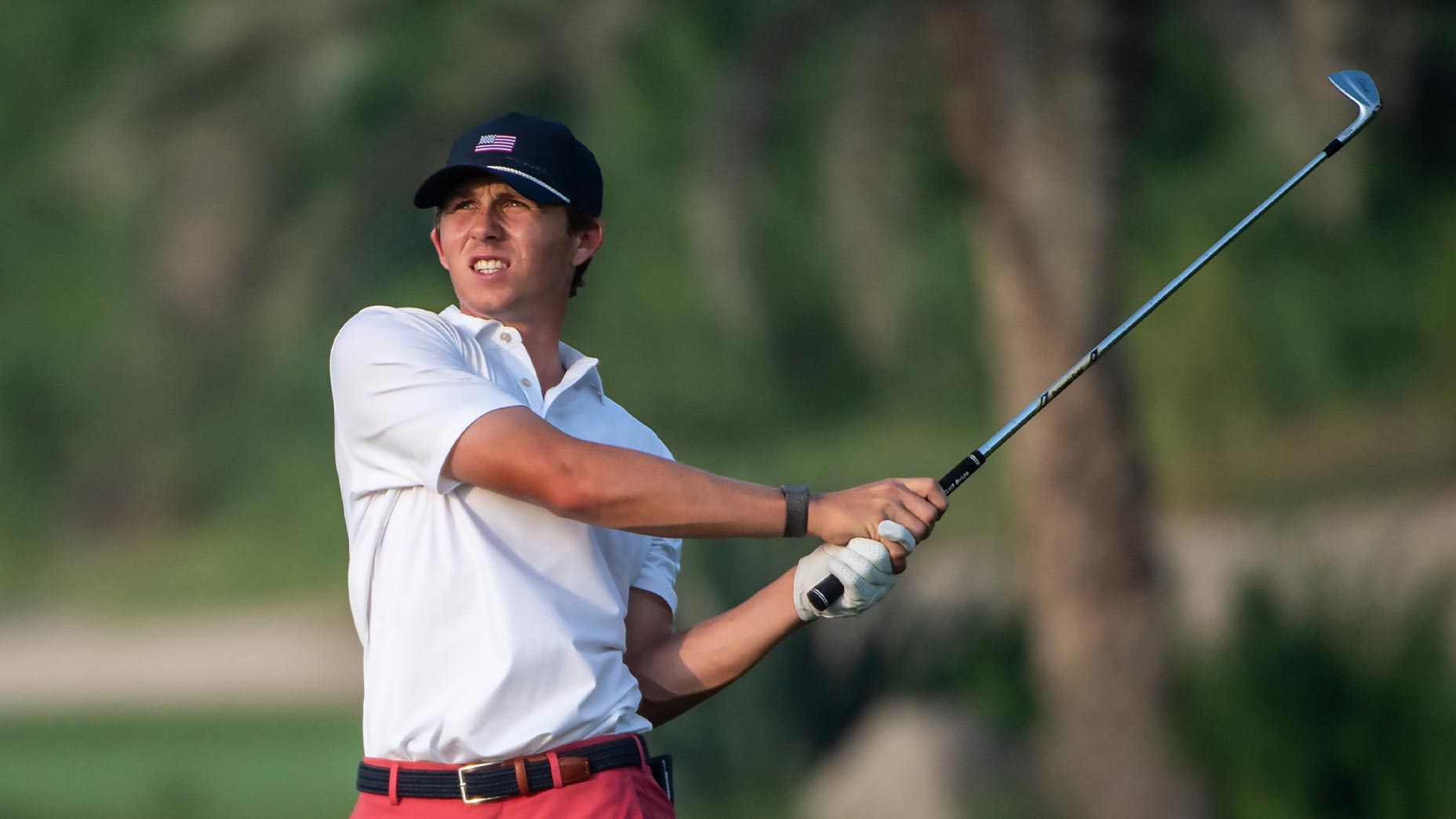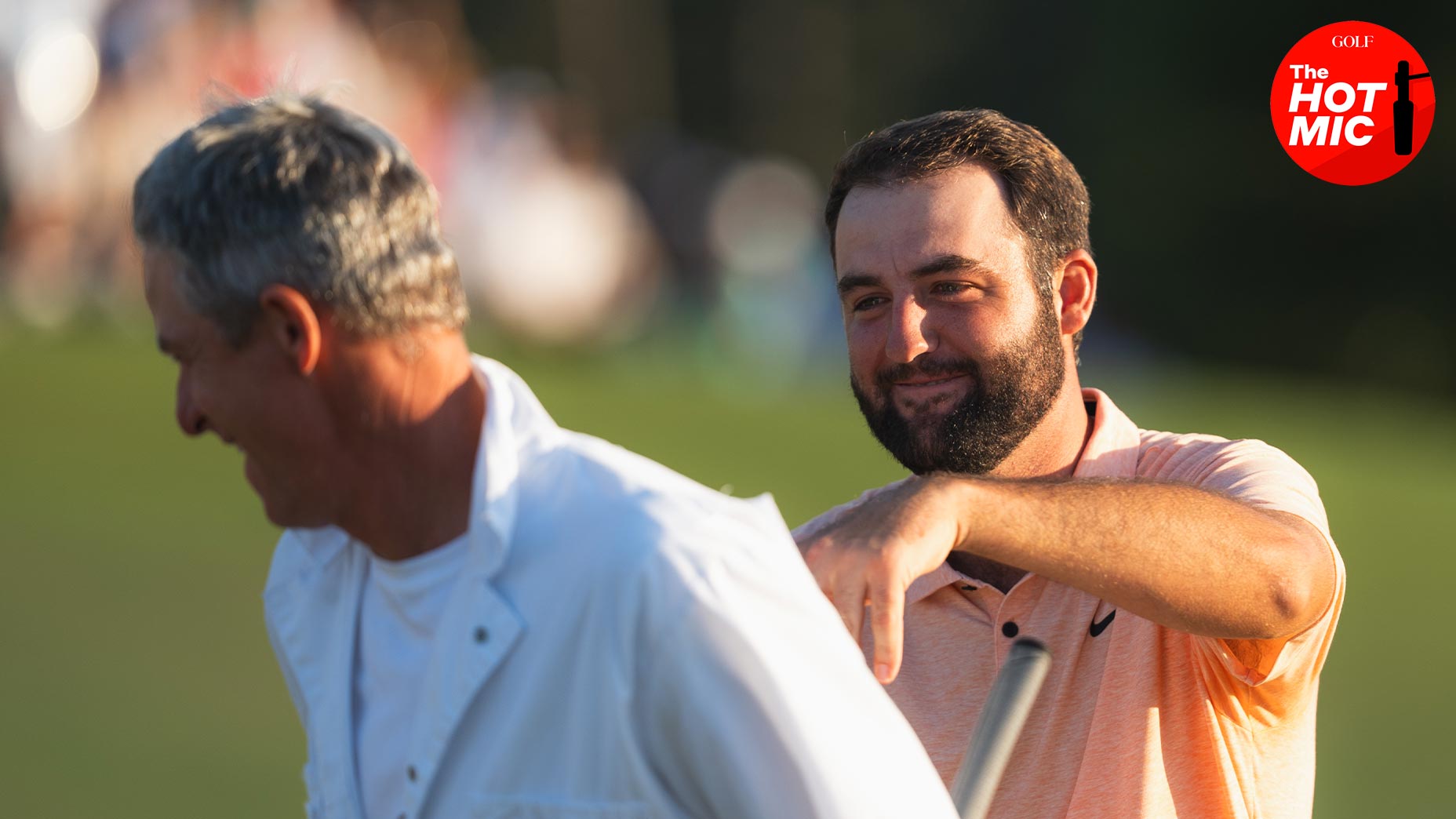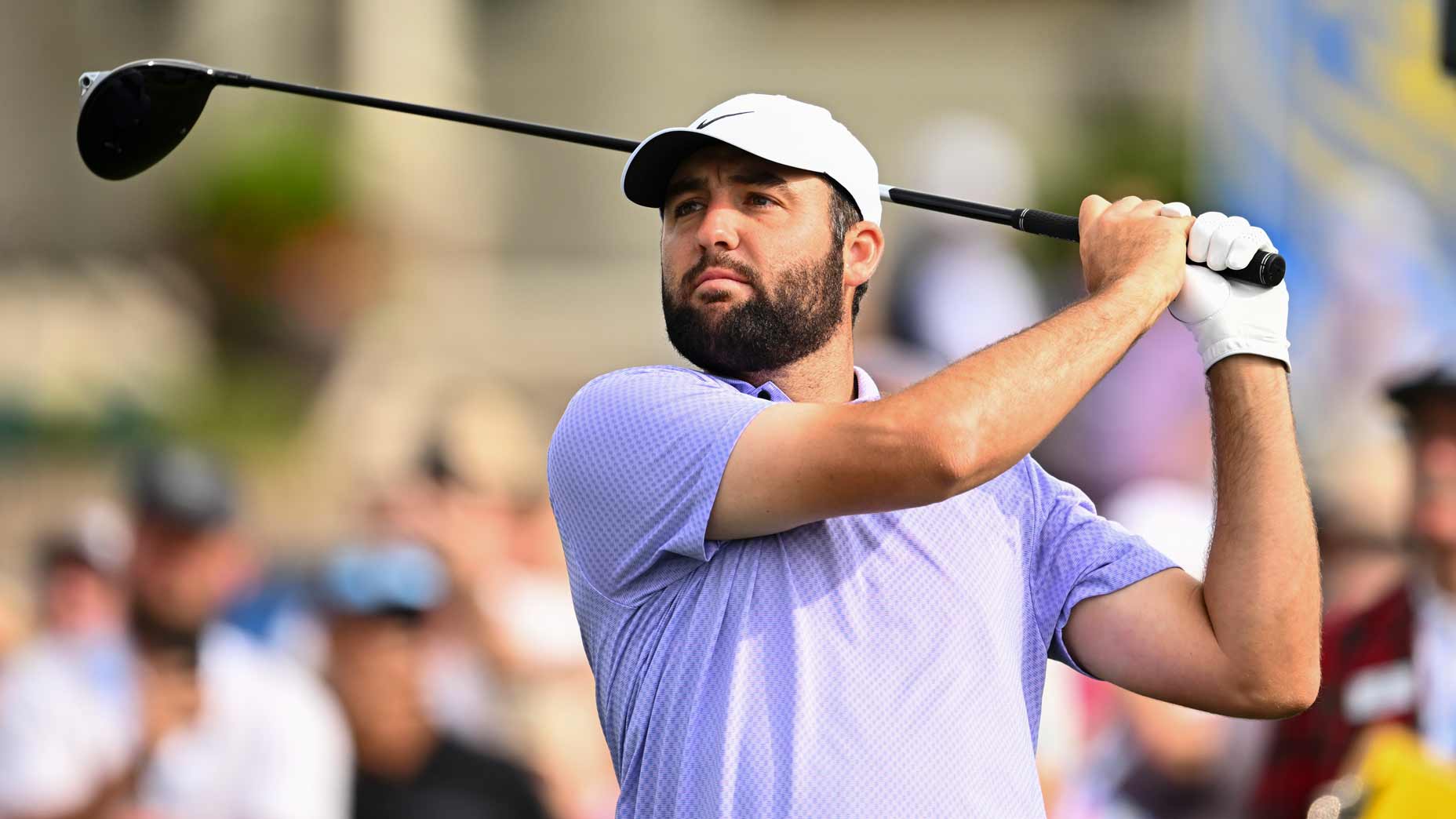PONTE VEDRA BEACH, Fla. — Today’s dispatch from the second round of the Players Championship, a golf tournament held at TPC Sawgrass, near Jacksonville, has three parts, not counting this introduction.
Part I concerns an uncommon — but not entirely rare — rules situation, in this case involving one member of the tournament’s so-called Supergroup, a Friday threesome comprising the popular American golf professionals Rickie Fowler, Phil Mickelson and Tiger Woods.
Part II offers brief observations of the interplay between the two older golfers in the group, Messrs. Mickelson, 47, and Woods, 42, during the unfolding of that rules situation, and a brief description of their intra-hole snacking on the 6th.
Part III notes changes in player decorum on the PGA Tour over the course of Mr. Mickelson’s professional career, which began in 1992.
Each succeeding part will be shorter and less consequential than the preceding one.
PART I.
The Supergroup at the Players — in rock history, the band Cream, featuring Eric Clapton and Ginger Baker, is an early example of a musical supergroup — began its Friday play at 8:27 a.m. on the 10th hole. Shortly after the metaphorical noon whistle, the three golfers had reached the short par-4 6th, their 15th of the day.
Mr. Mickelson — a left-handed golfer of considerable accomplishment and notably loquacious both on the course and off it, hit his tee shot into a bunker on the left side of the hole. Mr. Woods hit his tee shot down the middle of the fairway, fulfilling the design demands of the hole.
Mr. Fowler, 29, hit his tee shot right of the fairway and into a stand of tall pine trees and palm trees. He could not tell from the tee that the ball never fell to terra firma, but when he arrived on the scene fans told the four-time Tour winner that that is in fact what had happened.
The veteran rules official Mark Russell was called in, by walkie-talkie, to help adjudicate the situation. Tour officials still communicate with cumbersome walkie-talkies, deeply in this age of sleek cellphones, because it is easier to send out an APB (all points bulletin) via walkie-talkie than cellphone. An APB by text message is more feasible but possibly less efficient and foolproof. The rules officials find it comforting, hearing one another’s voices and knowing that a trained professional is on the scene, or reporting to it. 
Mr. Fowler could see a ball lodged in a palm frond roughly 40 feet above him. Mr. Russell informed Mr. Fowler that he could take an unplayable lie, and drop from near the base of the tree with a one-shot penalty, if he could positively identify the ball as his own.
Mr. Russell informed Mr. Fowler that he could use binoculars in an attempt to find the orange mark he applies to his ball to identify it. It is noteworthy that the rules allow the use of a visual aid since binoculars are not permitted in more ordinary circumstances. For instance, a player may not use binoculars to examine the slope of a green. The aid may be used in this circumstance because it is part of a factual investigation — is the ball yours or not? It is not part of an effort to get a competitive advantage. It is an example of the rulebook seeking a reasonable solution to an unusual situation.
Mr. Russell also informed Mr. Fowler that fans could shake the base of the tree in an effort to dislodge the ball, although Mr. Fowler should have declared his ball unplayable before the shaking occurred. The shaking did not dislodge the ball.
Here is Decision 18-2a/27 that covers shaking, although it does not cover group shaking:
A player whose ball is lodged high in a tree wishes to dislodge it by shaking the tree or throwing a club so that he can identify it and proceed under the unplayable ball Rule. Is this permissible?
Yes. The player should state his intention before taking such action to avoid any question being raised as to whether a penalty would be incurred under Rule 18-2a.
At one point, Mr. Fowler said that, through the binoculars, he could see a trace amount of orange on the ball.
“If you feel like you can identify it, we’ll operate from here,” Russell said. Meaning the ball would not have to declared lost.
“If you marked it with orange, and you can identify, that’s good enough for me,” Mr. Russell said.
But in the end, Mr. Fowler did not feel that he could positively identify his ball, and Mr. Russell gave Mr. Fowler and his caddie, Joe Skovron, a lift in a cart back to the tee. Typically, Tour players are not permitted to ride in carts intra-round but may do so when instructed by a rules official. If a player hitched a ride with, say, an on-course delivery cart he would be subject to a two-shot penalty.
Mr. Fowler made a four on his second ball, and with the original tee shot and the one-shot penalty for losing that ball, he made a double-bogey 6. He ended up shooting 145 for 36 holes. To qualify for weekend play one needed to shoot 143 or better.
PART II.
Mr. Mickelson and Mr. Woods stood near their tee shots, only about 15 yards from one another, while Mr. Fowler was deciding how to proceed. They did not speak at all during their wait. Mr. Mickelson then decided he would continue his play on the hole. He played his second shot and then Mr. Woods did the same.
They walked to the green near one another but did not speak on a warm afternoon that was getting warmer. They then spent several minutes on the 6th green, in which Mr. Woods two-putted for a par and Mr. Mickelson one-putted for a birdie. They were in very different parts of the green and had no need to speak to each other and didn’t. 
After completing their play on the hole they stood at the back of the green and watched Mr. Fowler as he continued his play on the hole. They stood about 10 feet apart but did not make eye contact or share any observations. Mr. Woods retrieved a homemade sandwich from his bag — it appeared to be a turkey sandwich on whole wheat bread — and ate it while standing up. Mr. Mickelson retrieved what appeared to be a bag of nuts from his bag and ate them while standing up.
Mr. Fowler played his approach shot into the green. Messrs. Woods and Mickelson watched in silence. After Mr. Fowler rolled his first putt within close range of the hole, the two players made a silent walk to the 7th tee.
PART III.
Mr. Woods and Mr. Mickelson both played Tour events as amateurs, going back to the early 1990s. In that period, when there were lengthy delays because of rules discussions or other disruptions, the Tour players would routinely sit on the hard bottoms of their bags.
Over the course of their long professional careers, the decorum for players on the PGA Tour started to change and become more formal. Today, seeing a player sitting on his bag is decidedly uncommon and one almost never sees a caddie sitting on a bag, which was once an ordinary sight.
Through the mid-1990s, it was common for caddies to lay the bags on the ground between shots, particularly when their players were putting. A bag on the ground was an invitation to a player to sit. But it is rare to see a bag horizontal on the modern Tour. Perhaps it is because caddies found it less of strain to pick up the bag when it is already standing up. Perhaps it is because sponsors want more exposure for the brand names stenciled on Tour bags.
More research will be required to comment meaningfully on this subject and it will be the subject of a future dispatch.
Michael Bamberger may be reached at mbamberger0224@aol.com.


